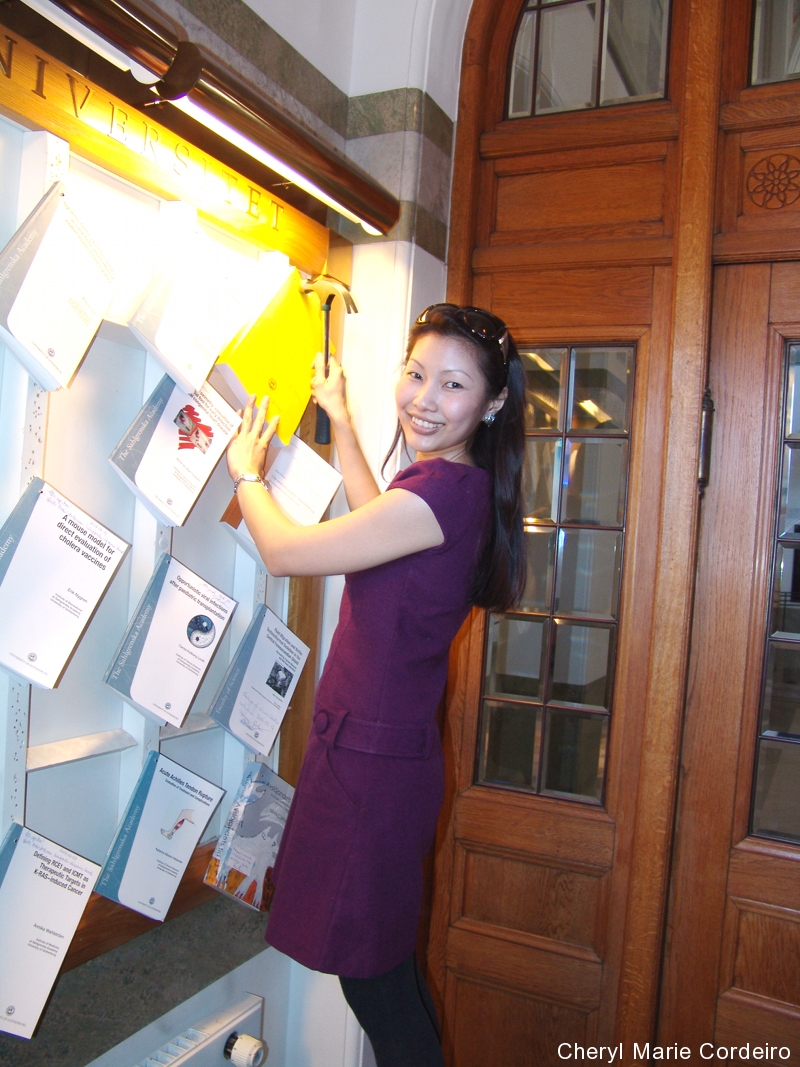Nailing the thesis at main administration building located in Vasaparken, at the University of Gothenburg, Sweden
Text & Photo © JE Nilsson, CM Cordeiro-Nilsson, Sweden 2009
When I was told that I was supposed to “nail” my thesis to the University wall, it initially didn’t occur to me that I was supposed to do so literally and in person, with a hammer.
But so it went.
